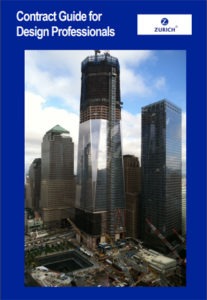Town was sued by its construction contractor for breach of contract based on failure to pay amounts owed. Town then impleaded its engineering firm, asserting that under the indemnification clause of the engineer’s contract the engineer owed the Town a duty to “assume the defense, indemnify and hold harmless the Town…” against claims brought against the town “to the extent of [ ] negligent acts, errors or omissions….” The town’s complaint against the engineer didn’t expressly allege negligence but asserts “that certain elements of the … design … were deficient….” The court granted summary judgment for the engineer dismissing the town’s indemnification claim because to obtain such indemnification the “town must show that the claims stem from [the engineer’s negligent acts, errors or omissions.” The court stated that “the Town had an obligation to adduce evidence in support of its indemnification claim and ample opportunity to do so.” The court agreed with the engineer’s argument that the town’s indemnity claim was premature because the underlying dispute had not been adjudicated. New England Building & Bridge, Co, Inc. v. Town of Cohasset, 2024 WL 2304843. COMMENT: This decision is striking in how different the conclusion is here from the decision by the court in a case we addressed in our July issue of ConstructionRisk Report.
In this case, the court stated that it is undisputed that in the Engineering Contract, the engineer promised to indemnify the Town under Article VIII, “to the extent of the negligent acts, errors or omissions, reckless or intentional misconduct of [Engineer], its agent(s), officers, employees or subcontractors in the execution of the work [in the Engineering Contract] or in guarding the same.” Accordingly, said the court, losses caused by the engineer’s negligence would fall within the plain language of the indemnification clause.
Here, where the plain language of Article VIII requires a showing of “negligent acts, errors or omissions” by the engineer in the execution of its work, the Town must show such negligence (which means that Engineer had a duty, breached such duty, and as a result, harmed execution of the contracted work). The Town argues that because its claim is for indemnification rather than an “affirmativ[e]” negligence claim, the engineer’s motion is premature because its underlying dispute with the contractor has not been adjudicated.
In its surreply, the Town attempts to shift the burden of establishing CDM Smith’s negligence to Plaintiff NEBB, stating that “[i]t is [Contractor] that has alleged negligence, and [Contractor] has presented expert witnesses in support of its allegations.” But the court concluded that “It is the Town’s duty, not [Contractor’s], to prove the basis for indemnification from [Engineer] as it alleged in its third-party complaint.
Risk Management Comment: A design firm should avoid language in the indemnification clause requiring it to “defend” its client against professional liability claims. The professional liability policy will not pay for such defense costs incurred under an indemnification clause. Because the duty to defend in an indemnity clause is treated similarity to an insurance carrier’s duty to defend an Insured party, courts generally hold that the duty to defend begins immediately after the complaint is filed, and that it is not premature merely because the underlying alleged negligence of the Insured party has not yet been demonstrated.
About the author: Article written by J. Kent Holland, Jr., a construction lawyer located in Tysons Corner, Virginia, with a national practice (formerly with Wickwire Gavin, P.C. and now with ConstructionRisk Counsel, PLLC) representing design professionals, contractors and project owners. He is founder and president of a consulting firm, ConstructionRisk, LLC, providing consulting services to owners, design professionals, contractors and attorneys on construction projects. He is publisher of ConstructionRisk Report and may be reached at Kent@ConstructionRisk.com or by calling 703-623-1932. This article is published in ConstructionRisk Report, Vol. 26, No. 8 (Dec 2024).
Copyright 2024, ConstructionRisk, LLC


Connect